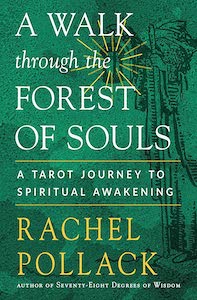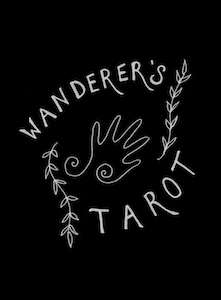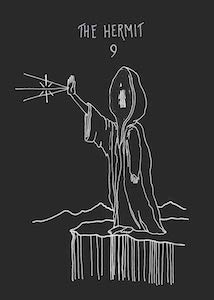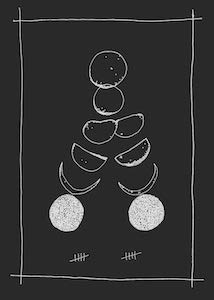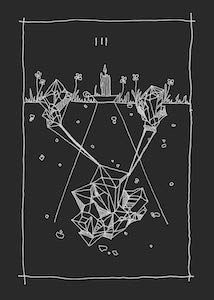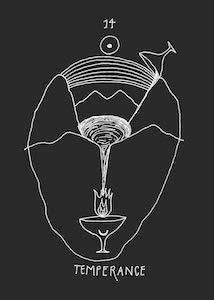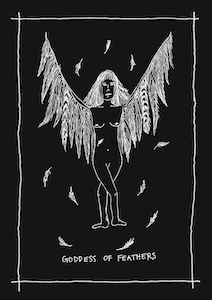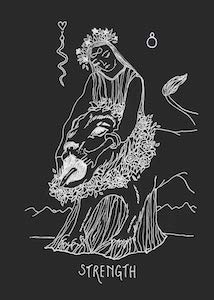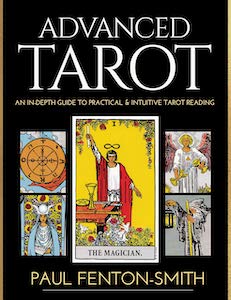
Magicians, Martyrs, and Madmen Tarot, by Travis McHenry and illustrated by Cristin Gottberg
Rockpool Publishing, 1922785849, 128 pages, 80 cards, October 2023
Travis McHenry has created an awesome tarot deck for those who love dark history. Magicians, Martyrs, and Madmen Tarot opens the portal for modern readers to reach into the depths of the past and gain wisdom from the life journey of those who have dared to push the bounds of reality, ultimately becoming enlightened or losing themselves in the process. As someone who thoroughly enjoys delving into the biography of my magical role models to glean insight into the circumstances that shaped their body of work, this deck is a treasure trove of interesting characters to learn from!
McHenry is a detail-oriented creator who brings new life to arcane occult knowledge, and for this I immensely appreciate his work. His previous decks Angel Tarot, Vlad Dracula Tarot, and Occult Tarot have a palpable energy to them, and this deck is no different. Once again, Henry has ventured afar and gathered what he’s learned for others in a dually gruesome and glorious deck.

Magicians, Martyrs, and Madmen Tarot casts a wide net in regard to the people included. While some might be considered unsavory, McHenry reassures readers “even the most terrible person in the deck had one or two redeeming qualities.”1 In his desire to bring these stories to life again, he sticks to the facts, though it becomes clear some of these characters’ realities are stranger than fiction.
This being said, the first entry in the guidebook, The Fool, features James Douglas, who “was discovered roasting the cook’s body parts over an open fire and eating pieces of the meat.”2 Instant stomach turn, right? But if you’re like me and also feel utterly fascinated by the story, then it’s worth continuing on in your work with this deck!
McHenry is true to his word about finding the redeeming qualities, writing in the description of the card “As the first card in this deck James Douglas represents brash behavior, jumping without thinking and the folly of committing acts of violence. However, it also shows a person who knows themselves, knows what they want in life and just goes for it. . . James Douglas knew from the start he wanted to be a cannibal killer. He didn’t wait until he was old enough to pursue his dream and he didn’t wait for somebody to give him permission![/efn_note]page 12[/efn_note]
“Hopefully when you read the short biographies of these historical figures you’ll discover that it doesn’t take noble birth or divine favor to transform yourself into a magic, martyr, or madman!”3

For every entry in the guidebook, there is a short biography of the person or people featured, highlighting their ultimate acts of magic or madness, and then a few lines tying in the traditional meaning of the tarot card with the story of the characters’ lives. And overall, McHenry does a REALLY great job matching the person of the card with the card’s meaning, conveying the message of the card in a way that brings a trio of scary shivers, enlightened new perspective, and dash of humor. Nothing elicits a laugh like the true utter depravity and darkness of humanity, nor prompts self-reflection as a magical practitioner like reading about the escapades of both con artists and true mystics, who often end up vilified regardless.
Illustrator Cristin Gottberg has done an exquisite job in the design of these cards. The cards themselves are a deep blue with a red sigil on the back and golden tinted edges. Her original paintings in this deck are primarily darker colors – reds, oranges, browns, and blacks – and there’s a slightly blurred quality to each image, leaving room for the imagination to creep in and fill in the gaps. Gottberg has infused the images with a sensual and fluid feeling, perfectly capturing the essence of the person on the card.
And it’s worth noting there are plenty of women featured in the deck too, despite the title of the deck which seems to focus primarily on men. The reason Henry chose the title is because it was the name of the book consulted by the Ghostbusters in Ghostbusters II as they hunted fictional Vigo Carpathian. Disappointed the book did not exist, Henry “vowed to someday bring it into reality.”4Some of the women Henry includes are Catalina de los Rios, Agnes Bernauer, Catharina de Chasseur and Eva Courier and Juliette Bisson.

Speaking of the last two, another neat feature of the deck is the inclusion of three Lovers cards: a female/female card, a male/male card, and a female/male card. This allows for customization of one’s deck based on personal preference; it also gives us more interesting stories to read!
Overall, Magicians, Martyrs, and Madmen Tarot is absolutely a worthwhile collector’s deck for those with an interest in dark history. There’s so much murder, mayhem, and mysticism to revel in while working with this deck. This deck will not be everyone’s cup of tea, but the unique flavor of the deck absolutely has its time and place and is a macabre delight for the resonant audience. Sometimes we all need to teeter on the edge of wrong and right in our magical practice, and finding out more about the path of others can certainly help to clarify your own boundaries.
If you’re seeking more of McHenry’s work, you can also check out Magicians, Martyrs, and Madmen: A Compendium. He wrote this book using primary sources, often the words of the person themselves or sources from the time period they were alive. The biographies in this deck are condensed versions of longer entries featured in the book.
Alanna Kali is an astrologer, numerologist, and pioneer spirit that loves to explore life through the lens of depth psychology. She has a passion for studying the humanities and social trends. Her academic work is centered upon reuniting body, mind, and spirit through eco-psychology. She loves reading, spending time in nature, and travel.


